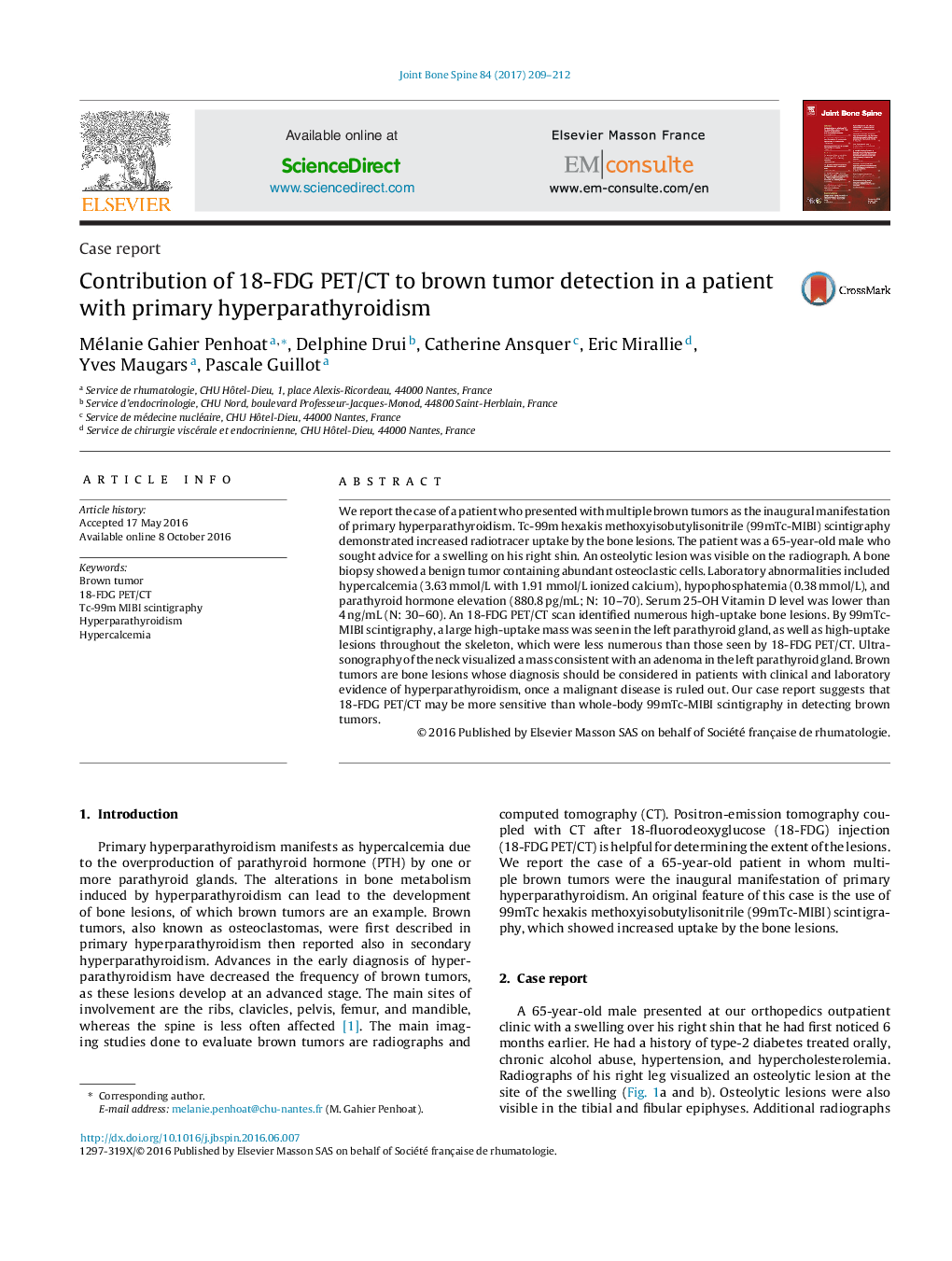| Article ID | Journal | Published Year | Pages | File Type |
|---|---|---|---|---|
| 5667615 | Joint Bone Spine | 2017 | 4 Pages |
We report the case of a patient who presented with multiple brown tumors as the inaugural manifestation of primary hyperparathyroidism. Tc-99m hexakis methoxyisobutylisonitrile (99mTc-MIBI) scintigraphy demonstrated increased radiotracer uptake by the bone lesions. The patient was a 65-year-old male who sought advice for a swelling on his right shin. An osteolytic lesion was visible on the radiograph. A bone biopsy showed a benign tumor containing abundant osteoclastic cells. Laboratory abnormalities included hypercalcemia (3.63Â mmol/L with 1.91Â mmol/L ionized calcium), hypophosphatemia (0.38Â mmol/L), and parathyroid hormone elevation (880.8Â pg/mL; N: 10-70). Serum 25-OH Vitamin D level was lower than 4Â ng/mL (N: 30-60). An 18-FDG PET/CT scan identified numerous high-uptake bone lesions. By 99mTc-MIBI scintigraphy, a large high-uptake mass was seen in the left parathyroid gland, as well as high-uptake lesions throughout the skeleton, which were less numerous than those seen by 18-FDG PET/CT. Ultrasonography of the neck visualized a mass consistent with an adenoma in the left parathyroid gland. Brown tumors are bone lesions whose diagnosis should be considered in patients with clinical and laboratory evidence of hyperparathyroidism, once a malignant disease is ruled out. Our case report suggests that 18-FDG PET/CT may be more sensitive than whole-body 99mTc-MIBI scintigraphy in detecting brown tumors.
